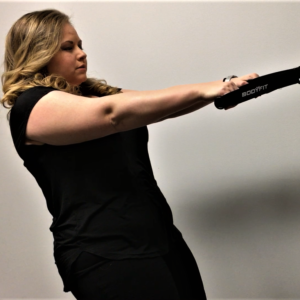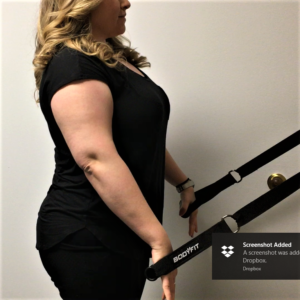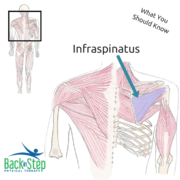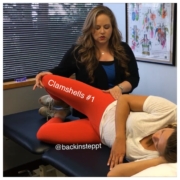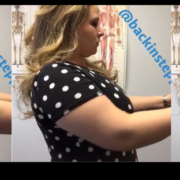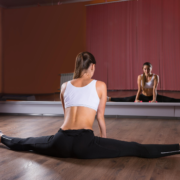Shoulder or Back Pain? Keep Reading!
When you’re experiencing pain in the shoulder or in the back, there are a lot of things that can be contributing to it. An evaluation with a physical therapist can help assess what all is playing a role in your pain. One structure that can be involved with BOTH areas is a large muscle called the latissimus dorsi.
The Anatomy & Function
The latissimus dorsi (lat) spans a large area across the back, originating from various points throughout the pelvis and low back (at the spinous processes of T7-L5, the thoracolumbar fascia, the iliac crest, and inferior 3-4 ribs). It then inserts at the intertubercular groove of the humerus (near the shoulder on the upper arm bone). It is the largest muscle in the upper body. The innervation is from the thoracodorsal nerve (C6-8).
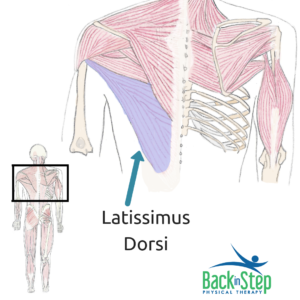
It helps in many different motions or actions, including shoulder extension (moving your arm behind you), shoulder adduction (bringing your arm across your body), and arm internal rotation (rotating your palm towards your body). The lat also assists with several other motions at the shoulder and helps to support and move at the spine.
If the latissimus dorsi isn’t doing its job, it can contribute to arm or shoulder pain, low back pain, decreased range of motion and function of the arm, and more. It can also make it difficult to pull something towards you. Lastly, it can also affect how you can do exercises like pull-ups, lat pull-downs, rows, and deadlifts.
What to Do About It⠀⠀⠀⠀⠀⠀⠀⠀
We’ve got a couple of options to share with you – both a stretch and a strengthening exercise.
Lat Stretch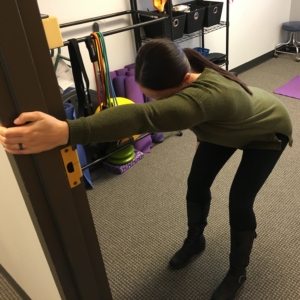
- Stand with your feet hip width apart or even slighty wider.
- Hold on to the door frame with your thumb pointing up towards the ceiling. Hand should start around chest height.
- Lean your hips back, like you’re trying to squat or sit back in a chair.
- To vary the stretch:
- Place your hand higher or lower on the door frame.
- Before sitting back into the stretch, rotate your body so that you’re facing your arm slightly, or so that your arm crosses slightly in front of your body. Then sit back.
Lat Strengthening
There are several different pieces of gym equipment that can be used for this exercise. However, one of my favorites is the TRX. It adds a dynamic balance component and works the core and hip stabilizers even more than some other options. Here’s how to do it:
- Stand with your feet shoulder width apart.
- Hold on to each of the TRX straps, arms in front of you and straight. Elbows do not need to be locked out in a straight position, however.
- Lean back, keeping your core engaged with spine and pelvis in neutral.
- Pull your hands down by your side, while keeping your body in this plank position.
- Make sure that you don’t let the shoulders hunch or roll forward as you come up to an upright position. Keep your shoulder blades pulled back and down to avoid this compensation!
Try these exercises and let us know how they work for you! They are two ways to try to combat shoulder or back pain. If you still have pain, give us a call and we can help get you back on track.
Do you have other things that you want to learn more about? Check out other blog posts and our Instagram page.
DISCLAIMER: The purpose of this site is to promote understanding of health, wellness, and prevention. The information on this site is not intended/implied to be a substitute for professional medical advice, diagnosis, or treatment. If you are experiencing pain, please see a medical professional.


